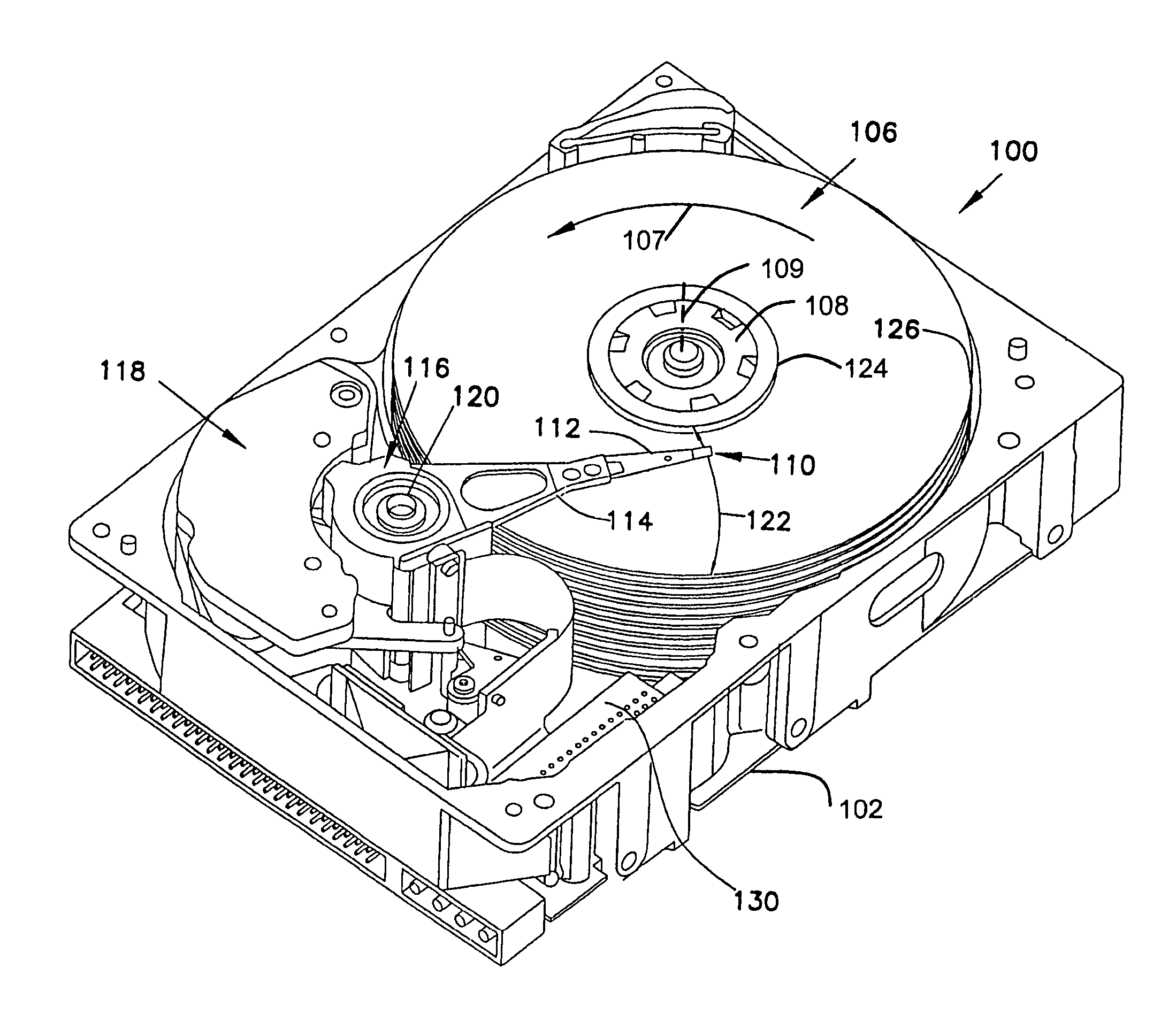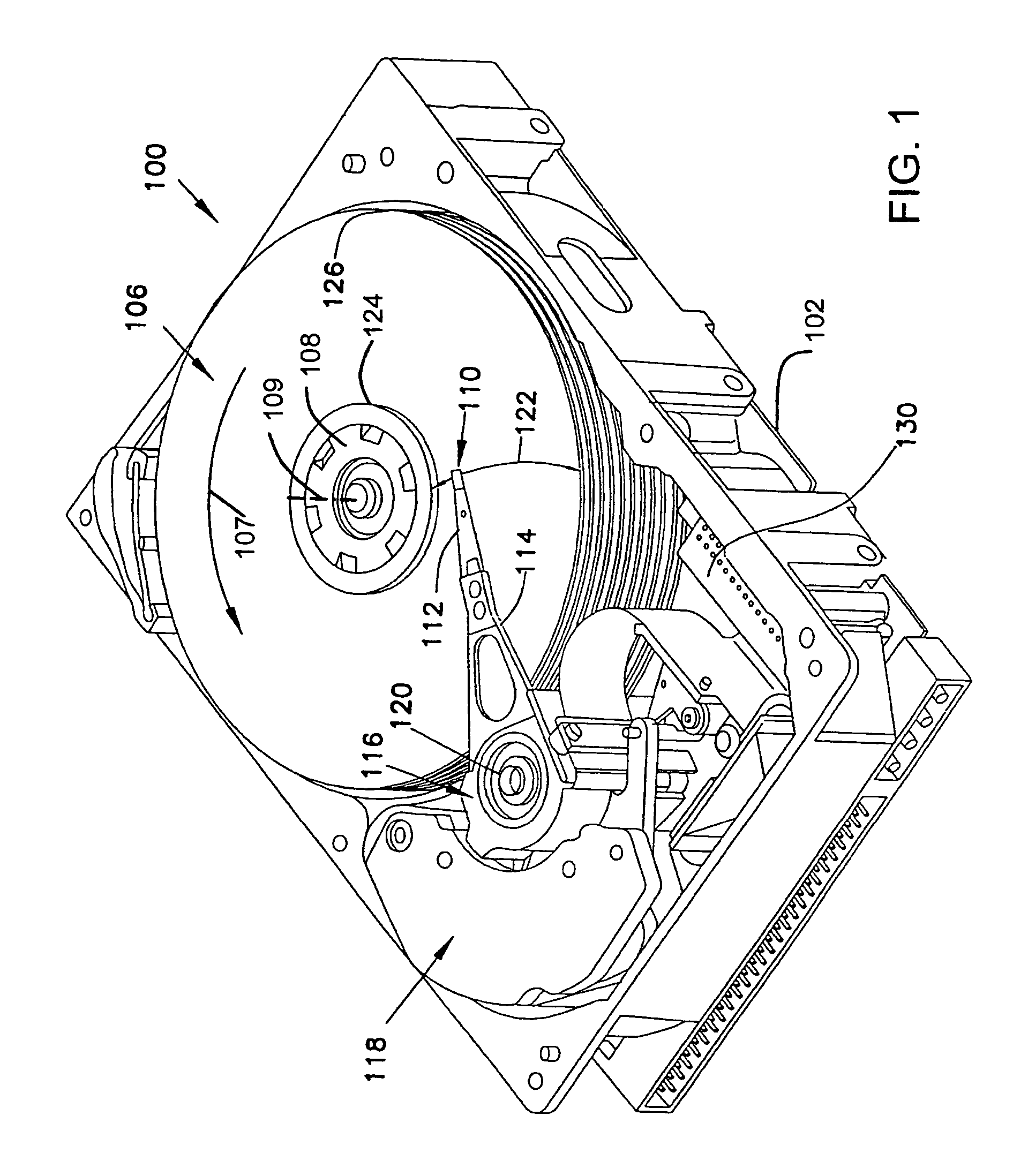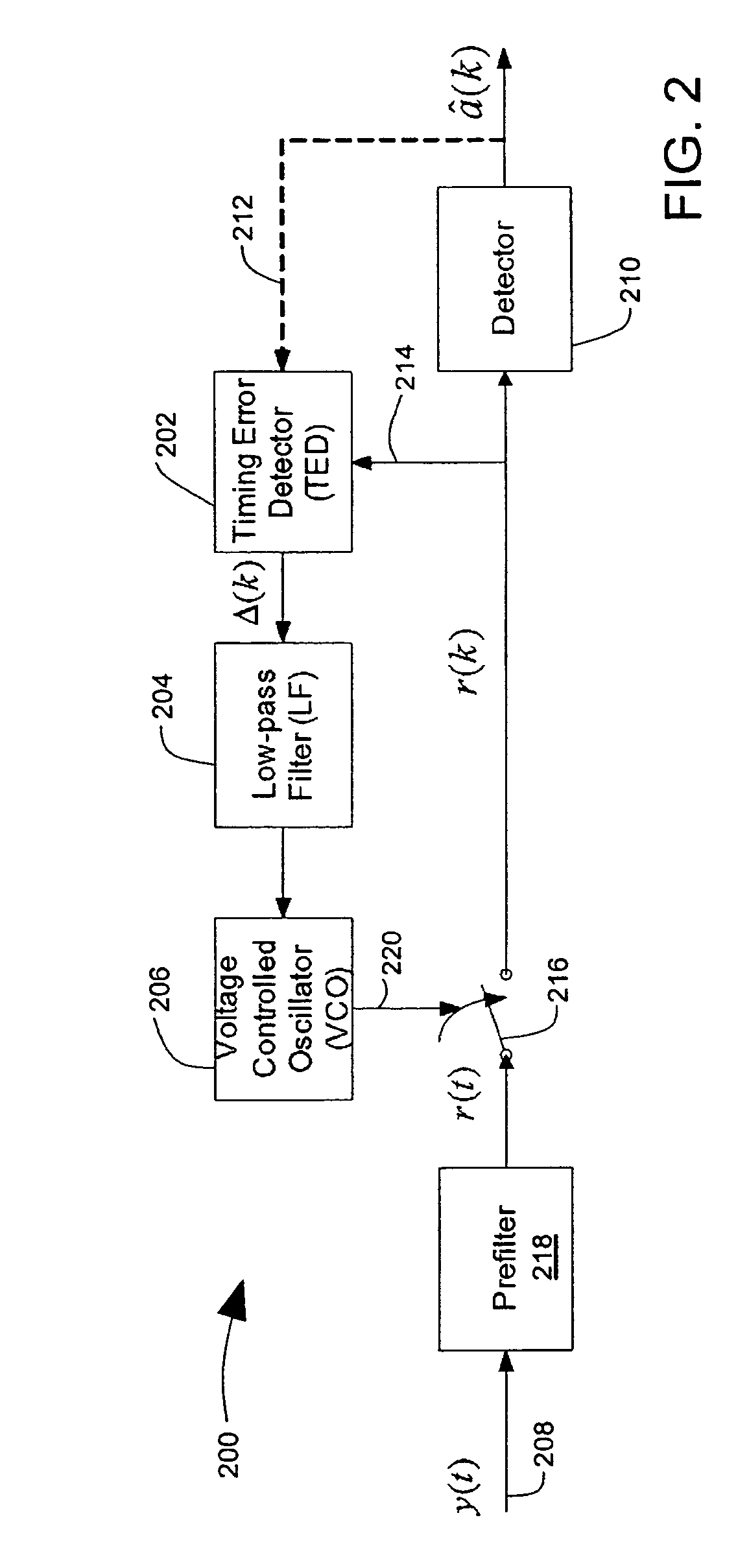Timing recovery in a parallel channel communication system
a communication system and parallel channel technology, applied in the field of parallel communication channels, can solve the problems of multiple timing recovery circuits consuming electrical power and circuit resources in the disc drive, one or more timing recovery circuits may not gain synchronization at all, and the signal-to-noise ratio (snr) is degraded
- Summary
- Abstract
- Description
- Claims
- Application Information
AI Technical Summary
Benefits of technology
Problems solved by technology
Method used
Image
Examples
first embodiment
[0026]FIG. 3 illustrates a block diagram of a parallel channel timing recovery circuit 300 that includes a sampling control output 302 based on a composite 304 of discrete time signal samples r1(k), r2(k), r3(k) . . . rM(k). The timing recovery circuit 300 receives multiple simultaneous data channels y1(t), y2(t), y3(t) . . . yM(t) from parallel read heads or other parallel data channels.
[0027]A number M of multiple prefilters 306, 308, 310 . . . 312 are provided in the timing recovery circuit 300. The prefilters 306, 308, 310, 312 each receive one of the data channels y1(t), y2(t), y3(t) . . . yM(t) and provides a corresponding prefilter output r1(t), r2(t), r3(t) . . . rM(t). The prefilters 306, 308, 310, 312 are preferably bandpass filters with a passband corresponding to the bandwidth of the data expected at the data channels y1(t), y2(t), y3(t) . . . yM(t). The prefilters 306, 308, 310, 312 filter out noise. The prefilters 306, 308, 310, 312 can also limit the bandwidth of the ...
second embodiment
[0033]FIG. 4 illustrates a block diagram of a parallel channel timing recovery circuit 400 that includes a sampling control output 302 based on a composite 304 of discrete time signal samples. Reference designations used in FIG. 4 that are the same as reference designations used in FIG. 3 identify the same or similar features. In FIG. 4, the sampling filters 314, 316, 318, 320 of FIG. 3 comprise sampling switches 414, 416, 418, 420 that are controlled by the sampling control output 302. In other respects, the recovery circuit 400 in FIG. 4 is similar to the recovery circuit 300 in FIG. 3.
third embodiment
[0034]FIG. 5 illustrates a block diagram of a parallel channel timing recovery circuit 500 that includes a sampling control output based on a composite of discrete time signal samples. Reference designations used in FIG. 5 that are the same as reference designations used in FIGS. 3-4 identify the same or similar features.
[0035]In FIG. 5, the joint timing and data detector 340 comprises a plurality of independent detectors 550, 552, 554, 556 and a composite timing error detector (C-TED) circuit 560 that extracts timing error estimates from the parallel incoming signals ri(k) and their corresponding decision outputs âi(k) from the detectors 550, 552, 554, 556.
[0036]The C-TED 560 receives input from the multiple sampled waveforms ri(k) as well as the decision outputs âi(k) from the detectors (or preambles during the acquisition phase) to compute the current timing error estimate 304. The output 304 from the C-TED 560 is then low-pass filtered in low pass filter 342 before it is applied...
PUM
 Login to View More
Login to View More Abstract
Description
Claims
Application Information
 Login to View More
Login to View More - R&D
- Intellectual Property
- Life Sciences
- Materials
- Tech Scout
- Unparalleled Data Quality
- Higher Quality Content
- 60% Fewer Hallucinations
Browse by: Latest US Patents, China's latest patents, Technical Efficacy Thesaurus, Application Domain, Technology Topic, Popular Technical Reports.
© 2025 PatSnap. All rights reserved.Legal|Privacy policy|Modern Slavery Act Transparency Statement|Sitemap|About US| Contact US: help@patsnap.com



